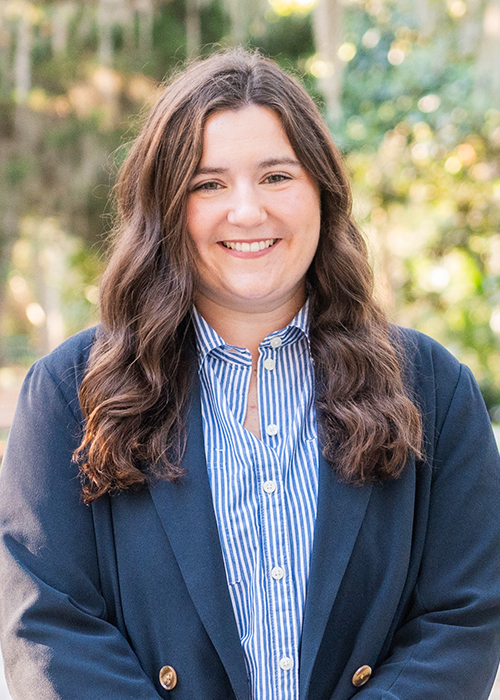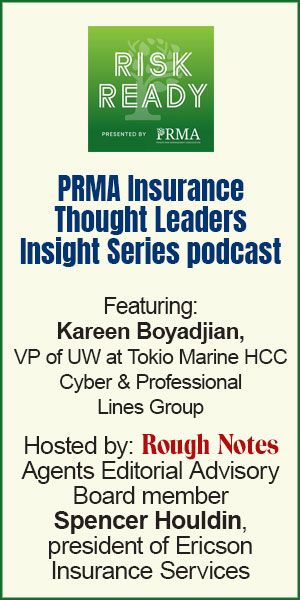It’s not about having all the answers,
but rather inviting others into the conversation
By Lindsay Wallace
When we picture “thought leaders,” our minds often go to seasoned executives being interviewed on the news, writing books, or getting quoted in industry magazines. While experience brings wisdom, the idea that young professionals have to wait for decades of experience before sharing thoughts with the world is outdated.
The thing is, young professionals have more to contribute than ever before. We’re entering the industry with fresh eyes, different expectations, and a grasp of the tools that are shaping the future. We’re learning as we go, and that learning process itself is worth sharing.
Thought leadership isn’t about having all the answers. It’s about showing up, being curious, and inviting others into the conversation.
Naivety is a superpower
Like many people early in their careers, I hesitated to share anything publicly at first. What could I possibly say that hadn’t already been said by someone with more experience? It wasn’t until I attended a conference where a speaker, Dani Kimble, founder of Azelie Marketing, told me something that completely shifted my mindset.
“Naivety is a superpower” she told me in an Uber on the ride to the Wilmington airport.
That stuck with me. When you recognize that you’re new to something, you give yourself permission to ask questions, to be a sponge, to learn out loud. In doing so, you make space for others to learn by your side. So much of success is built on failures and wrong turns, but no one talks about those in real time. They only show you the highlight reel after they’ve figured it out.
What if more people shared during the figuring-it-out stage?
The difference between pretending and documenting
If you’ve ever cringed while on social media, reading a post from someone who seemed to know everything about everything, you’re not alone. There’s a clear difference between people pretending to be experts and those who are documenting their journey. One feels performative. The other feels like a genuine conversation.
Sharing your learning process is like laying your cards out on the table. You’re not claiming to have all the answers. You’re saying, “Here’s what I’m exploring. Here’s what’s working. Here’s where I’m stuck.” That kind of vulnerability builds trust fast.
[Y]oung professionals have more to
contribute than ever before.
We’re entering the industry with
fresh eyes, different expectations,
and a grasp of the tools that are
shaping the future.
Trust leads to connection, and I’ve had countless moments where clients, some of whom I barely knew, brought up something I mentioned on my podcast or in a post. Sometimes it’s a story about planning my wedding or a quick comment about my morning workout. They remember it, they relate to it, and it gives us common ground from the very start.
It becomes more than just marketing, it’s human.
Creating content builds confidence and depth
Creating content doesn’t just help others; it focuses your thinking. When you take what you’re learning and try to explain it to someone else, your brain goes deeper. You move from simply absorbing information to translating it into something digestible.
This matters especially in an industry where complex concepts are everywhere, like insurance or finance. If you can explain retention, EBITDA, or perpetuation planning to someone who’s brand new, that’s a skill. Once you build a framework for breaking down ideas, you can apply it to almost anything.
You also become more open. For me, podcasting and writing haven’t just helped solidify what I know; they’ve exposed me to new perspectives. Comments on my LinkedIn posts, phone call chats to episodes, and quiet DMs often introduce ideas I hadn’t considered. When you put yourself out there, new ideas are invited in.
What to share and how to start
If you’re wondering what kind of content is “worth” sharing, here’s how I decide: Would I bring it up to a friend, co-worker, or my fiancé at the end of the day?
If the answer is yes, it’s probably something someone else would find helpful or interesting, too.
One of my favorite early posts was called “My Little LinkedIn Black Book.” I was just a year into the industry and shared what I’d learned about making your LinkedIn profile look like there’s a human being behind it to a group of marketing professionals. It wasn’t groundbreaking, but it was honest and useful.
Today, my podcast and our company newsletter have become a hub for a lot of my content. Each episode, article or case study sparks ideas that our team repurposes into LinkedIn posts or conversations. You don’t need a massive platform to start. Just share what you’re learning in a way that’s helpful and human.
The career impact of being seen
There’s a reason people say others do business with people they know, like, and trust. Showing up consistently helps you build trust before you ever get on a call or walk into a meeting.
I’ve been invited to speak at events, to guest on podcasts, and to connect with people I never would have met otherwise, all because I posted about what I was learning and working on. One event that stands out was with the Big “I” of Louisiana, where I spoke about building my personal brand as a young professional compared to how my mom built hers as a seasoned expert.
The visibility doesn’t just affect your résumé; it helps in the day to day, too. I’ve had agency clients tell me they feel like they already know me before we’ve even met. That familiarity builds rapport fast, and it makes the working relationship stronger from day one.
Getting over the hang-ups
Let’s be honest, putting your thoughts out into the world is scary. Every time I post, I’m a little nervous. What if what I wrote is completely wrong? What if people judge it?
Here’s what I’ve learned. Everyone thinks about themselves way more than they think about you. I’ve seen friends from high school or old co-workers post about wins, promotions, or lessons they’ve learned, and my reaction has never been negative. I’m usually just happy for them. So why wouldn’t I give myself that same grace?
If there’s one guarantee, it’s that you will feel imposter syndrome. It’s only valid if you’re trying to be something you’re not. When you’re upfront about learning in real time, there’s nothing to hide. You can’t be an imposter when you’re leading with authenticity.
You don’t need to be an expert to be a thought leader. You just need to be willing to share.
Creating space for others to do the same
If you’re in a position to lead or manage younger professionals, here’s one simple thing you can do: Invite them to the table. Let them speak in meetings. Give them time to ask questions. Encourage them to share their thoughts, even if they’re still forming.
That kind of empowerment internally leads to more confidence externally. When people feel safe to speak up, they start contributing in bigger ways, not just in meetings, but in the broader conversation happening online and in the industry at large.
And that’s what we need right now. The insurance industry is evolving rapidly. From AI and automation to data strategy and digital client experiences, younger professionals are driving the future of how we work, but we need to give them space to lead.
I wish I had known sooner that innovation doesn’t always come from experience. It often comes from the outside. From someone who’s new. From someone who’s willing to ask why we do something a certain way and challenge it if the answer is just “because that’s how it’s always been done.”
If you’re a young professional reading this, here’s what I want you to know. Your voice matters. Your perspective matters. And the things you’re learning, struggling with, building, and questioning, all of it is valuable.
So share it. The right people will be glad you did.

Lindsay Wallace is the director of growth at AgencyFocus, where she helps independent insurance agencies make confident financial decisions. She co-hosts the Insurance Refocused podcast and is passionate about turning complex topics into meaningful conversations, building relationships through content, community, and connection.






